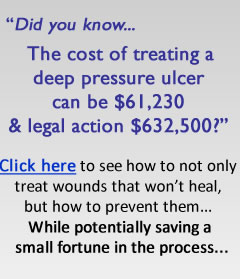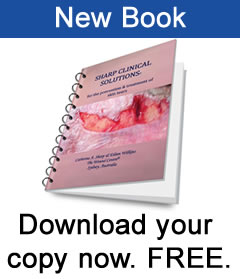More on Incontinence……..
I could find no publications that reported a statistically significant causal link between incontinence and pressure injury (PI) development. An examination of the literature and the risk factors for incontinence, included in many tools reveals the potential difficulty screening poses for healthcare workers. Most PI risk screening tools, as well as the studies that have reported on incontinence as a potential risk factor for PU development, [1] do not differentiate between ‘urinary incontinence’ (UI) and ‘faecal incontinence’ (FI), nor between the different types of UI, stress or functional incontinence.[2]
Many assessment tools have combined urinary incontinence and faecal incontinence, into one risk factor, ‘incontinence.’ It is therefore, difficult to objectively assess ‘incontinence’ as a causal risk factor, or an intervening variable coming after a predictive factor, prior to PI development. However bivariate analysis has shown UI to be associated with a significantly higher rate of PI development.[3] Berlowitz (2001) reported continent residents had a higher rate of PI 90 days after the initial screening than those coded as ‘usually continent’ or ‘incontinent’. This prospective study was carried out on 14,607 nursing home residents who were without a Stage 2 PI, or larger, although these Stages were not defined.
[1] Allman RM, Goode PS, Patrick MM, Burst N. & Bartolucci AA. Pressure ulcer risk factors among hospitalized patients with activity limitation. JAMA 1995; 273(11): 865- 70; Fisher AR, Wells G. & Harrison MB. Factors Associated with Pressure Ulcers in Adults in Acute Care Hospitals. Advances in Skin & Wound Care 2004; 17(2): 80-90; Papanikolaou P. Lyne PA. & Lycett EJ. Pressure ulcer risk screening: application of logistic analysis. J Adv Nurs 2003; 44(2):128-36; Pase MN. Pressure relief devices, risk factors, and development of pressure ulcers in elderly patients with limited mobility. Adv Wound Care 1994; 7: 38–43; Maklebust J, Siggreen MY. Pressure Ulcers. Guidelines for Prevention and Nursing Management. Springhouse PA: Springhouse Corporation, 1996, 24; Versluysen M. Pressure sores in elderly patients. The epidemiology related to hip operations. J Bone Joint Surg Br 1985; 67(1): 10-3; Brandeis GH, Morris JN, Nash DJ et al. The epidemiology and natural history of pressure ulcers in elderly nursing home residents. JAMA 1990; 264:2905–2909.
[2] Klingler HC & Marberger M. Incontinence after radical prostatectomy: surgical treatment options. Urology 2006; 16(2): 60-64
[3] Berlowitz, DR; Brandeis, GH; Morris, J; Ash, AS; Anderson, JJ; Kader, B; Moskowitz, MA. Deriving a Risk-Adjustment Model for Pressure Ulcer Development Using the Minimum Data Set. Journal of the American Geriatrics Society 2001; 49(7): 866-871
This is an excerpt from Sharp CA and McLaws M-L. Estimating the risk of pressure ulcer development: is it truly evidence-based? International Wound Journal December 2006 Volume 3 Issue 4 Pages 344 – 353 and part of my Master of Public Health (res) (UNSW) thesis ‘Pressure Ulcers: risk, physiology and the magnitude of the problem in a Sydney home nursing service.’ (available on Google)



Your anwser was just what I needed. It’s made my day!
So is the blofiim usually contaminated as well, i.e. the occasional positive, deep wound culture (and I usually do not culture wounds routinely) that is obtained, is that not the reason for the blofiim occurring?
An fascinating discussion could be valued at comment. I do believe which you basically write read far more about this subject, it may possibly not often be a taboo topic but normally persons are too couple of to dicuss on such topics. To a higher. Cheers